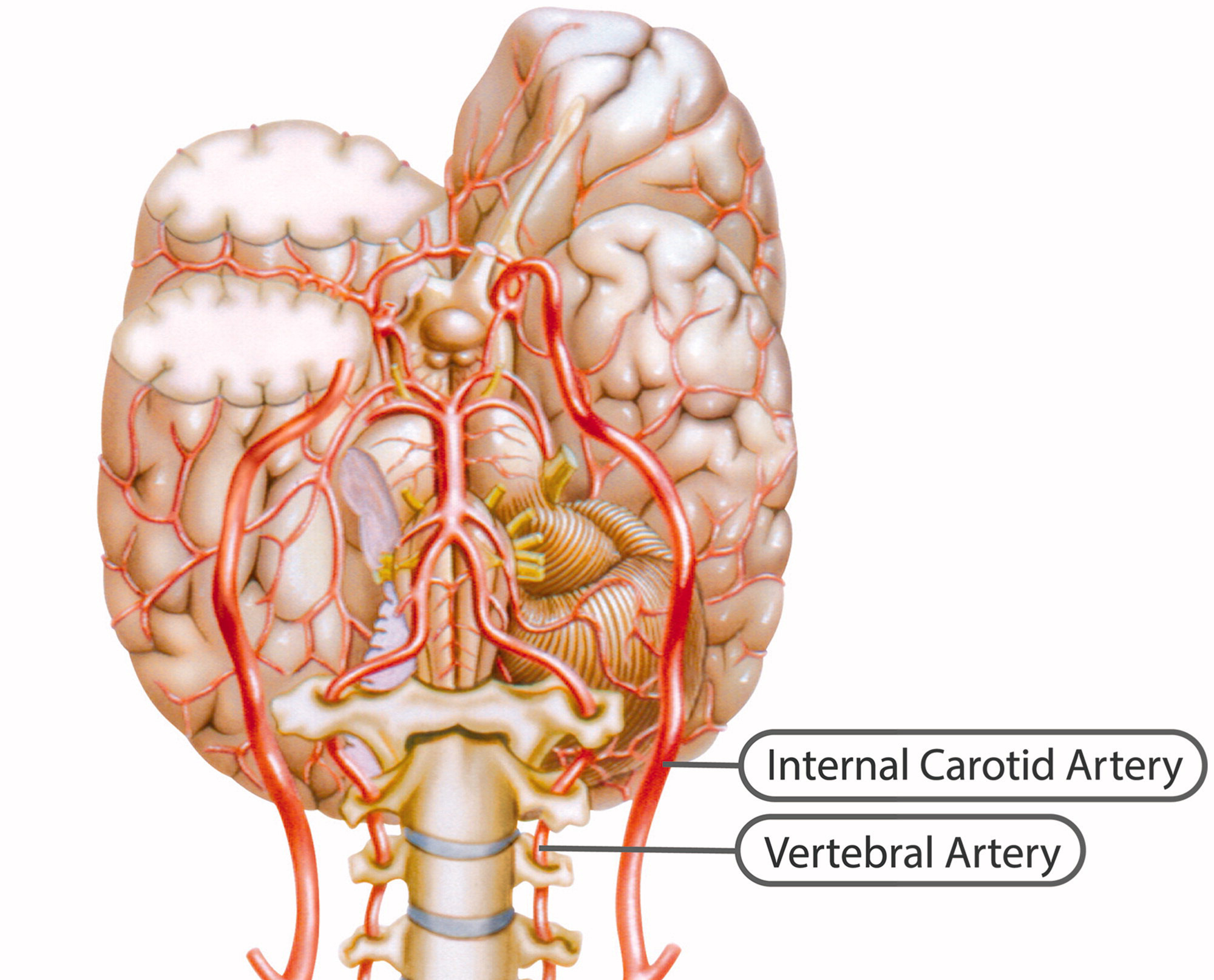The Etiology of Cervical Artery Dissection
SOURCE: J Chiropr Med. 2007 (Summer); 6 (3): 110-120 ~ FULL TEXT
Michael T. Haneline [a], and Anthony L. Rosner [b]
a Professor,
Palmer College of Chiropractic West,
Department of Research, San Jose, CA 95134
michael.haneline@palmer.edu
b Professor,
Parker College of Chiropratic,
Brookline, MA 02446
The etiology of cervical artery dissection (CAD) is unclear, although a number of risk factors have been reported to be associated with the condition. On rare occasions, patients experience CAD after cervical spine manipulation, making knowledge about the cervical arteries, the predisposing factors, and the pathogenesis of the condition of interest to chiropractors. This commentary reports on the relevant anatomy of the cervical arteries, developmental features of CAD, epidemiology of the condition, and mechanisms of dissection. The analysis of CAD risk factors is confusing, however, because many people are exposed to mechanical events and known pathophysiological associations without ever experiencing dissection. No cause-and-effect relationship has been established between cervical spine manipulation and CAD, but it seems that cervical manipulation may be capable of triggering dissection in a susceptible patient or contributing to the evolution of an already existing CAD. Despite the many risk factors that have been proposed as possible causes of CAD, it is still unknown which of them actually predispose patients to CAD after cervical spine manipulation.
From the FULL TEXT Article:
Introduction
The etiology of cervical artery dissection (CAD) is, for the most part, unclear; and what has been proposed as an explanation for its pathogenesis is largely hypothetical. [1] Furthermore, when dealing with a particular case of CAD, the pathogenesis is especially speculative. [2] Nevertheless, a number of risk factors have been reported to be associated with the condition, including connective tissue abnormalities, hypertension, recent infection, migraine headache, the use of oral contraceptives, and others. Of special interest to chiropractors is the role cervical spine manipulation (CSM) plays, if any, in the pathogenesis of CAD. Indeed, patients do experience CAD on rare occasions after CSM, making knowledge about the cervical arteries, the predisposing factors, and the pathogenesis of the condition important for chiropractors.
Anatomy of the cervical arteries
There are more articles like this @ our:
The understanding of CAD is greatly enhanced by having a basic grasp of the relevant anatomy. A pair of vertebral arteries (VAs) and a pair of internal carotid arteries (ICAs) pass through the cervical region to supply the brain with blood. The ICAs and their branches are often referred to as the anterior circulation because they supply blood to the anterior portion of the brain. The vertebral and basilar arteries comprise the vertebrobasilar system, which is referred to as the posterior circulation because it supplies blood to the posterior brain (Fig 1). [3]
FIGURE 1
The ICAs supply blood to the anterior portion of the brain, and the vertebral and basilar arteries supply the posterior brain.
Read the rest of this article here!



Leave A Comment